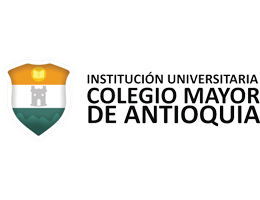OSTEOARTRITIS EN EQUINOS: UNA REVISIÓN BIBLIOGRÁFICA
Resumen
La osteoartritis se considera una enfermedad articular degenerativa es la causa más común de claudicación en equinos. Estructuras anatómicas como el cartílago articular, el hueso subcondral y la membrana sinovial tienen la función amortiguar y lubricar la articulación, a su vez, producen citoquinas inflamatorias y enzimas degradadoras, las cuales pueden favorecer el daño articular. El diagnóstico común es la radiografía, tiene baja correlación con la clínica de la enfermedad, el análisis de líquido sinovial, permite evaluar la reacción leucocitaria del líquido articular. Las terapias convencionales se limitan a la inhibición de los factores pro inflamatorios mediados por las interleuquinas y a la presentación de enzimas degradadoras de matriz extracelular, por esto, la administración de corticoides vía intra articular es la técnica más frecuente, a esto se suma la administración de aines de manera sistémica y el uso de terapias coadyuvantes como el ácido hialurónico, glicosaminoglicanos y condroitin sulfato.
Citas
Ashdown, S. (1993). Lameness in Horses (Vol. 54). Http://doi.org/10.1017/CBO9781107415324.004
C. Wayne McIlwraith, et al. (2011). Equine Models of Articular Cartilage Repair. Equine Veterinary Education, 4, 317–326.
Carmona, J. U., & Giraldo, C. E. (2007). Fisiopatología y tratamiento convencional de la osteoartritis en el caballo Pathobiology and medical treatment of the osteoarthritis in the horse. Vet.zootec., 1(1), 60–73.
Caron JP, G. R. (2003). Principal and practices of joint disease treatment. In, Diagnostics and Management of Lameness in the Horse. Elsevier Science, 746–763.
Caron, J. (2011). Arthritis: Osteoarthritis. In: Diagnosis and Management of Lameness in the Horse. Saunder Elsevier, 655–668.
Catherine M. Steel. (2008). Equine Synovial Fluid Analysis. Veterinary Clinics of NA: Equine Practice, 24, 437–454.
da Costa Barcelos, K. M., de Rezende, A. S. C., Biggi, M., Lana, Â. M. Q., Maruch, S., & Faleiros, R. R. (2016). Prevalence of Tarsal Diseases in Champion Mangalarga Marchador Horses in the Marcha Picada Modality and Its Association With Tarsal Angle. Journal of Equine Veterinary Science, 47, 25–30. http://doi.org/10.1016/j.jevs.2016.07.012
Dyce K. M. (2012). Anatomía Veterinaria.
Frisbie, D., McIlwraith, C., Kawcak, C., Werpy, N. (2013). Evaluation of Intra-articular Hyaluronan, Sodium Chondroitin Sulfate and N-acetil-D-Glucosamine Combination Versus Saline (0.9% NaCl) for Osteoarthritis Using an Equine Model. The Veterinary Journal, 197, 824–829.
Garcia RS, Melo UP, Ferreira C, Toskano FS, C. G. (2009). Estudo clinico e radiográfico da osteoartrite tarsica juvenil em potros da raça mangalarga marchador. Ci Anim Bras, 10, 254–60.
Gnagey L, et al. (2006). Effect of standing tarsal angle on joint kinematics and kinetics. Equine Vet J, 38, 628–33.
Goodrish, L., Nixon, A. (2006a). Medical Treatment of Osteoarthritis in the Horse – A Review. The Veterinary Journal, 171, 51–69.
Goodrish, L., Nixon, A. (2006b). Treatment of Osteoarthritis in the Horse – A Review. The Veterinary Journal, 171, 51–69.
Grauw, J. et al. (n.d.). Intra-articular Treatment with Triamcinolone Compared with Triamcinolone with Hyaluronato: A Randomised Open-label Multicentre Clinical Trial in 80 lame Horse. Equine Veterinary Journal, 2015.
Habib GS, Saliba W, N. M. (2010). Local effects of intra-articular corticosteroids. Clin Rheumatol, 4, 347–356.
Hassan, A., El-Shafey, A., Ahmed, H., Hamed, M. (2015). Effectiveness of the Intra-articular Injection of Platelet Rich Plasma in the Treatment of Patients with Primary Knee Osteoarthritis. The Egyptian Rheumatologist, 37, 119–124.
Jara, E., Corrêa, F., Bello, U. A., Naturales, F. D. R., & Veterinaria, E. D. M. (2016). “ Osteoartritis en equinos : descripción , diagnóstico y alternativas terapéuticas .” Food and Environmental Research, 4(3), 16–39.
Kidd, J. A., Fuller, C., & Barr, A. R. S. (2010). Osteoarthritis in the horse. Equine Veterinary Education, 13, 160–168.
King el atl. (2012). Mechanisms of aquatic Therapy and its Potential Use in Managing Equine Osteoarthritis. Equine Veterinary Education, 204–209.
Koenig TJ et al. (2014). Treatment of experimentally induced osteoarthritis in horses using an intravenous combination of sodium pentosan polysulfate, N-acetil glucosamine, and sodium hyaluronan. Vet Surg., 5, 612–622.
McCarthy HE, JJ Bara, K Brakspear, SK Singhrao, C. A. (2012). The comparison of equine articular cartilage progenitor cells and bone marrow-derived stromal cells as potential cell sources for cartilage repair in the horse. Vet J, 192, 345–351.
McIIwraith CW. (2010). The use of intra-articular corticosteroids in the horse: what is known on a scientific basis? Equine Vet J., 6, 563–571.
McIlwraith CW, Frisbie DD, K. C. (2012). The horse as a model of naturally occurring osteoarthritis. Equine Veterinary Journal, 1, 297–309.
McIlwraith, C. (2011). Principles and Practices of Joint Disease Treatment. In: Diagnosis and Management of Lameness in the Horse. In Second Ed. Saunder Elsevier (pp. 840–852).
McIlwraith, C. W. (2005). From arthroscopy to gene therapy—30 years of looking in joints. Proceedings of the American Association of Equine Practitioners, 51th.
McIlwraith, C. W., Frisbie, D. D., & Kawcak, C. E. (2012). The horse as a model of naturally occurringosteoarthritis. Bone and Joint Research, 1(11), 297–309. http://doi.org/10.1302/2046-3758.111.2000132
Murray RC, Branch MV, Dyson SJ, Parkinaud TD, G. P. (2007). How does exercise intensity and type affect distal tarsal sub chondral bone ticness? J Appl Physiol, 102, 2194–200.
Patrick T. Colahan. (1999). Equine medicine and surgery.
Polli Magali et al. (2013). Variación del nivel de citoquinas en líquido sinovial de equinos con enfermedad articular tratados con biofosfonatos. Revista Complutense de Ciencias Veterinarias, 7, 69‐83.
Raub RH. (2010). Growing more durable equine athletes. Comparative Exercise Physiology. Cambridge J, 7, 49–56.
Rogers CW, Bolwell CF, Tanner JC, W. V. R. (2012). Early exercise in the horse. J Vet Behav, 7, 375–9.
Rolando J, et al. (2013). Aplicación de la determinación de las metaloproteinasas de la matriz (MMP) en las enfermedades articulares equinas. Fisiología animal y laboratorio del metabolismo óseo.
Ross, Michael W, S. J. D. (2011). Diagnosis and Management of Lameness in the Horse.
Sánchez Naranjo, J. C., & López Zapata, D. F. (2011). Fisiopatología celular de la osteoartritis: El condrocito articular como protagonista. Iatreia, 24(2), 167–178.
Sandoval, J. A., López, C., & Carmona, J. U. (2013). Therapies intended for joint regeneration in the horse. Archivos de Medicina Veterinaria, 45(3), 229–236. http://doi.org/10.4067/S0301-732X2013000300002
Souza, M. V. de. (2016). Osteoarthritis in horses – Part 2 : a review of the intra- articular use of corticosteroids as a method of treatment. Braz. Arch. Biol. Technol., 59(December), 1–10. http://doi.org/10.1590/1678-4324-2016150025
Steel, C. (2008). Equine Synovial Fluid Analysis. Veterinary Clinics Equine Practice, 24, 437 – 454.
Summer, N. H. (2012). Avances en Osteoartritis equina.
van Weeren PR, de G. J. (2010). Pain in osteoarthritis. Vet Clin North Am Equine Pract, 3, 619–642.
Weeren, R. (2014). Joint physiology: responses to exercise and training. In: Equine Sports Medicine & surgery. Equine Sports Medicine & Surgery, 213–222.
ZIMMERMAN, M., & DYSON, S. (2011). COMPARISON OF RADIOGRAPHIC AND SCINTIGRAPHIC FINDINGS OF THE SPINOUS PROCESSES IN THE EQUINE THORACOLUMBAR REGION. Veterinary Radiology & Ultrasound, 52(6), 661–671.




